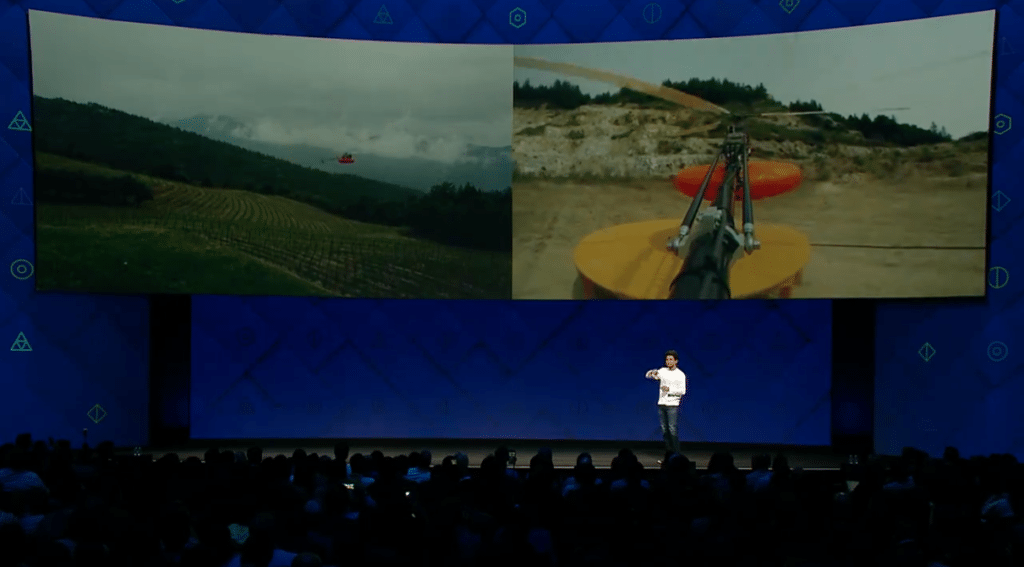
Facebook’s connectivity lead Yael Maguire shows the crowd a new helicopter solution at F8 2017. Image courtesy of Facebook
Facebook’s Mark Zuckerberg told the crowd at the company’s annual global developer conference, F8, that a team in Arizona was currently preparing for the second flight of Aquila. Its first flight took place last June, exceeding established goals. Expected to fly for only 30 minutes, the test was going so well that Facebook kept it in the air for 96 minutes.
When Yael Maguire, director of Facebook’s connectivity program, addressed the F8 crowd April 19, he shared more of the fixed-wing unmanned aircraft system’s accomplishments. He said that last year, the connectivity team developed technology for Aquila that achieved a 20 gbps millimeter link over 8 miles. Later, the team achieved 36 gbps over the same link, which Maguire said beat Facebook’s own world record. When the team put that solution into a Cessna, it reached 16 gbps over the same 8-mile path. An optical cross-link was also created over the path, and reached 80 gbps.
“Imagine streaming up to 4,000 ultra-high-definition videos simultaneously,” Maguire said. “That’s what we’re able to do with the fastest system we have available today.”
But Aquila — which Maguire said has the wingspan of a Boeing 737, the mass of one-third of a Toyota Prius and runs on the power of three blow dryers — is probably a decade from full operation. While it has reached these achievements, regulatory and technological obstacles will prevent Aquila from its purpose for what could be another 10 years. However, Maguire said Facebook is passionate about Aquila’s mission of bringing instantly deployable connectivity to remote areas, specifically in times of crisis. So, his team started to develop something that could be “just a few years out” from service.
“Connectivity usually starts, especially in rural contexts, from towers. You have to get up to a certain height to make that brightness spread around,” said Maguire. “And we started to think about towers themselves, and [if we] could reduce them to their fundamental essence. We wanted to reduce the tower to something that was as simple as a single cable that could be deployed instantly.”
Called “Tether-Tenna,” Maguire explained that this new solution requires tethering to fiber and power on the ground, winching the cable to a helicopter and flying the helicopter into the air. He described it as a type of “insta-infrastructure.” The helicopter, he said, is roughly the size of a Volkswagen Beetle with the mass equal to one of the Beetle’s tires. During testing, it has operated for up to 24 hours, continuously. Maguire expects it could eventually be expanded to multiple months.
“There’s lots of challenges that we have to work out,” Maguire said. “It’s a high-voltage system that has to support kilovolts of power that go up through the tether; it has to survive very high winds; we have to avoid things like lightening. There’s lots of challenges ahead, but we’re really excited about the notion of this Tether-Tenna system.”